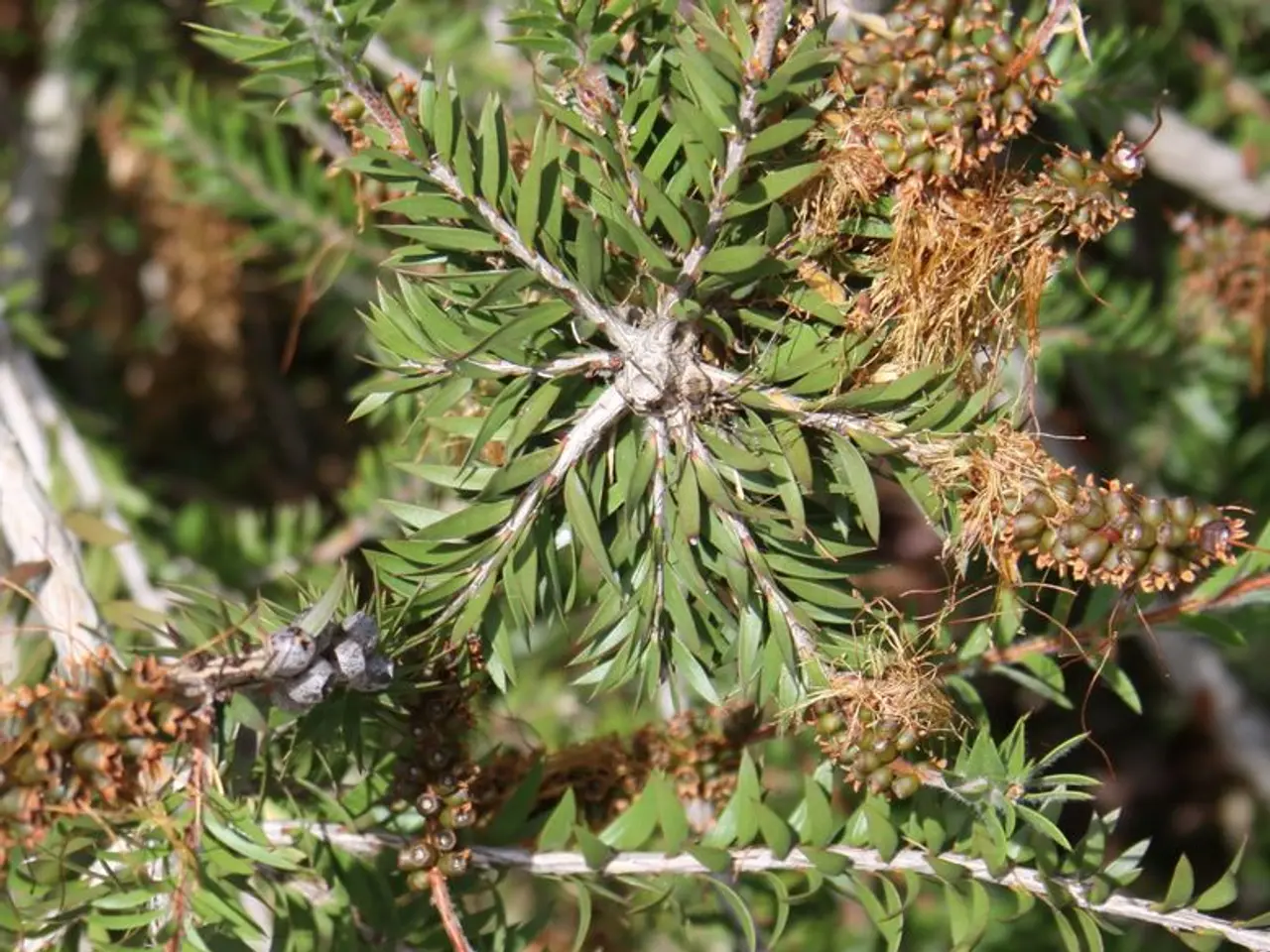Enhance Your Front Yard's Charm with these Top 7 Fruit-Bearing Trees – Enhance Your Property's Curb Appeal with a Tasty Touch
Incorporating fruit trees into your front yard can offer a charming aesthetic, while providing fresh produce for your table. Here's a guide to some of the best small fruit trees suitable for various USDA hardiness zones, along with specific growing, pruning, and care tips.
Serviceberry (Amelanchier spp.)
Zone: 4 to 9
Growing Tips: Serviceberries thrive in full sun to part shade and prefer moist, well-draining soil. For optimal flower and fruit production, plant them in full sun.
Pruning & Care Tips: Prune after fruiting to maintain shape and remove dead wood. Water them in dry spells.
Flowering Crabapple (Malus spp.)
Zone: 4 to 8
Growing Tips: Flowering crabapples require full sun and well-drained soil. Dwarf varieties like 'Sugar Tyme' and 'Royal Raindrops' stay under 15 ft.
Pruning & Care Tips: Prune in late winter to shape, remove any suckers and diseased branches, and maintain good airflow to prevent fungal issues.
Peach, Nectarine, Apricot
These fruits typically require full sun, well-drained soil, and are usually self-fertile. Dwarf varieties suit small spaces.
Pruning & Care Tips: Annual pruning in late winter or early spring to open the canopy, remove dead or crossing branches, and thinning fruit to improve size and quality.
Apple and Pear Trees
Apples: Zones 3-8; Pears vary
Growing Tips: Both apple and pear trees often require pollinator varieties nearby and thrive in full sun with well-drained, fertile soil.
Pruning & Care Tips: Prune in winter when dormant, maintain open center or modified leader shapes, and remove damaged wood to improve air circulation.
Sweet Cherry
Zone: 5-7
Growing Tips: Sweet cherries need pollinators, full sun, and prefer deep, well-drained soil.
Pruning & Care Tips: Prune lightly to shape, avoid heavy pruning, remove dead or crossing branches, and protect fruit from birds if needed.
Dwarf Variety Cherry & Plum Trees
Zones: 4-8
Growing Tips: These trees are suitable for small spaces, full sun, and container planting is possible. Consistent watering is essential.
Pruning & Care Tips: Keep trees compact with annual pruning, selective thinning to stimulate fruiting, and use drip irrigation for moisture consistency.
Zone 9 (Warm Climates with Mild Winters)
- Citrus trees such as Meyer lemon, calamondin, satsuma mandarin, and sweet clementine thrive here; require full sun and protection from cold snaps.
- Tropical fruit trees like avocado, starfruit, passionfruit, and Asian guava can be grown outdoors with some winter protection.
General Care Tips for Front Yard Fruit Trees
- Plant trees in well-drained soil with enough sunlight (usually full sun).
- Mulch around the base to conserve moisture and suppress weeds.
- Water regularly, especially during dry periods or when young.
- Prune annually during dormancy or after harvest to maintain size and productivity.
- Use disease-resistant varieties when available to minimize chemical treatments.
- For small yards, choose dwarf or semi-dwarf rootstocks to keep tree size manageable.
This approach balances ornamental appeal and functionality, providing both beauty and fresh fruit in diverse climates and limited spaces.
For fig trees, prune them when dormant in winter to keep them open and remove dead material. Keep the soil moderately moist and feed the tree in early spring with low-nitrogen food.
Serviceberry trees can add a charming aesthetic to your home-and-garden, particularly in the front yard, as they offer not only an appealing look but also fresh produce for your table. To ensure the best growth, serviceberries thrive in full sun to part shade and prefer moist, well-draining soil, just like many other small fruit trees such as Flowering Crabapples and fruit trees like Peach, Nectarine, Apricot, Apple, and Pear. Incorporating these fruit trees into your lifestyle by growing them in your home-and-garden might be a delightful addition to your gardening hobbies.




